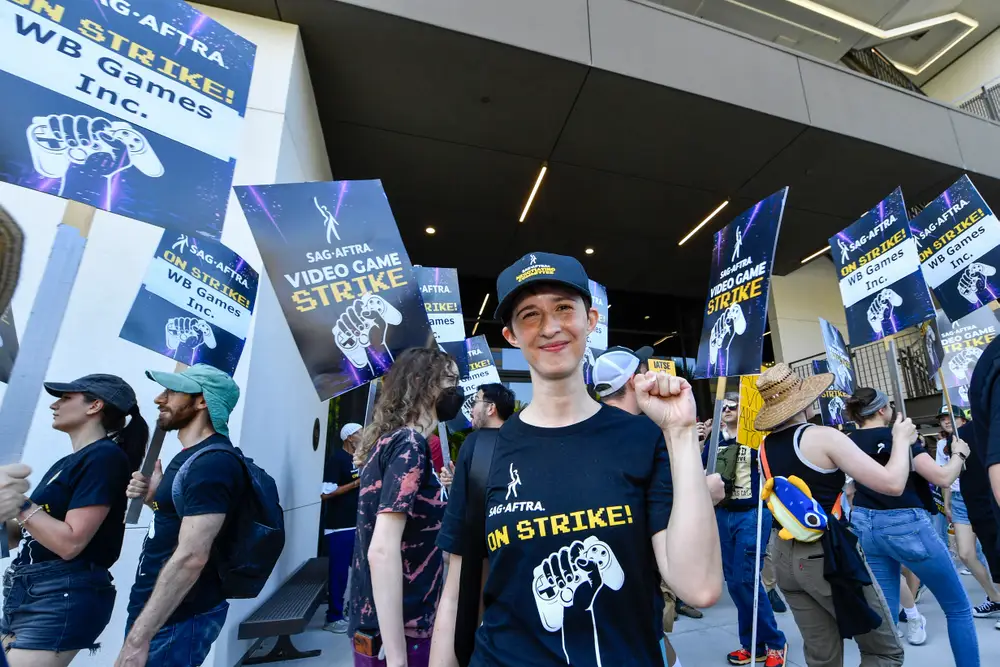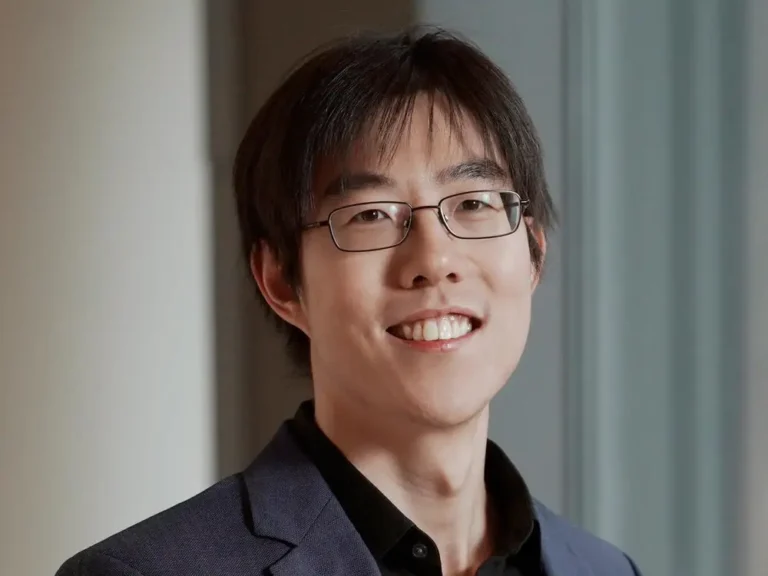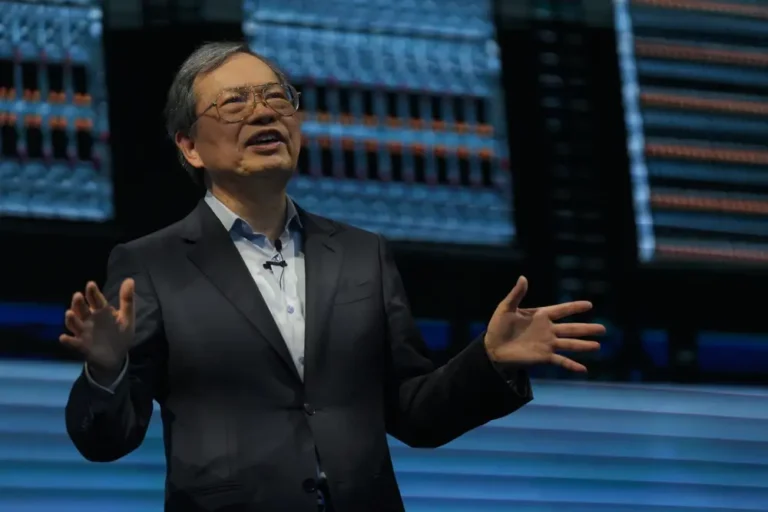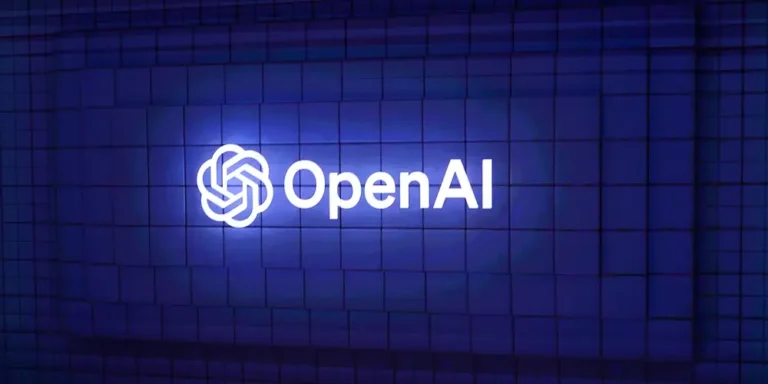Video game actors fight for AI protections and compensation for their ‘digital replicas’ amid a gaming market slowdown

SAG-AFTRA Interactive Media Agreement Negotiating Committee member Sarah Elmaleh poses as SAG-AFTRA union video game performers strike in front of Warner Bros. Games.
It’s not uncommon for Andi Norris to spend eight hours on set, running and jumping on all fours. The Los Angeles-based actor and stunt performer has worked on games such as “Resident Evil Village,” “Vader Immortal,” and “Magic: The Gathering Arena.”
Making a creature come to life in a video game is a collaborative process, where she interprets the directions to bring characters to life. Norris is now concerned that the motion capture work she puts in will be considered “data” rather than performance, meaning that gaming studios could use her recorded movements without consent and create an AI replica of her without compensation.
Interactive media contract negotiations between SAG-AFTRA and video game studios have been ongoing since 2022 and have stalled due to disagreements over AI protections. The video game actors’ strike, which began officially on July 26, follows last year’s Hollywood TV and theatrical strike when the Writers Guild of America and SAG-AFTRA walked out due to concerns over wages, streaming, and AI protections.
Tensions in the ongoing video game strikes arose over how AI can be used for “digital replicas” and whether actors can be compensated for them. According to SAG-AFTRA, studios’ current proposals only protect and compensate for replicas if the performance is readily identifiable and attributable to the actor.
Actors say this interpretation leaves loopholes since they often create characters that do not sound similar to their normal voices. Moreover, stunt performers say this requirement neglects how characters are a composite of different motion captures.
“They require a digital replica to look, talk, and move exactly like you in order for that to be protected. If you’ve played video games at all, that is almost never the case,” Norris said.
These negotiations take place amid a slowdown in the $200 billion video game industry. Hardware sales have dropped, and game developers are cutting thousands of jobs. Meanwhile, companies like Activision Blizzard are using generative AI tools to reduce costs and increase productivity after losses.
Audrey Cooling, a spokesperson for the video game companies involved in the interactive media negotiations, said that the studios and the union have already found common ground on 24 out of 25 of the proposals.
“We have worked hard to deliver proposals with reasonable terms that protect the rights of performers while ensuring we can continue to use the most advanced technology to create great entertainment experiences for fans,” Cooling said in a statement. “Under our AI proposal, if we want to use a digital replica of an actor to generate a new performance of them in a game, we have to seek prior consent and pay them fairly for its use. These are robust protections, which are entirely consistent with or better than other entertainment industry agreements the Union has signed.”
Eighty video games have signed tiered budgets and interim interactive media agreements with the union.

Andi Norris works as a stunt performer for motion capture.
AI impacts gaming jobs
Not all actors oppose the use of AI. Linsay Rousseau, an actor who has lent her voice to characters in games like “God of War Ragnarök” and “Deathloop,” invested in Ethovox, a voice AI model that sources and compensates actors to create digital replicas. She has also recorded audio so that her voice can be licensed and used for synthetic voice models.
“It’s potentially opening up new avenues of revenue that did not previously exist for voice actors, such as providing scratch work for video games,” Rousseau said.
If new tools are not transparent about their sourcing, unintended consequences could arise. Connor Fogarty, a Los Angeles-based voice actor who has been featured in games such as “Dead by Daylight” and “Fortnite,” said that he had heard AI-generated versions of his voice that he did not grant permission for. For example, a fan used the AI audio generator ElevenLabs to recreate his voice and make a “Dead by Daylight” TikTok video.
“I understand people might have attractions to fictional characters, but to see my iteration of the character and my ‘voice’ flirting with some TikToker I didn’t know, it just made me feel odd,” Fogarty said.
The fan later deleted the videos upon Fogarty’s request.

Connor Fogarty voices Dead by Daylight character Wesker.
Debates on Reddit have also surged over the ethics of fans using AI-generated voice tools for “mods”, or alterations of existing video games. The lack of control over these tools can create what Fogarty calls a “whack-a-mole” situation, where actors are “at the mercy of fans who made it.”
“It can be frustrating and heart-wrenching when you are a newer performer in the industry, just trying to make some inroads, and there are forces outside of your control and people carelessly using technology,” Fogarty said.
AI is not fast enough yet
AI relies upon prompt engineering, where a model interprets the text to create the closest output based on the data it is trained on. Actors who spoke with B-17 said that one of the common misconceptions about AI is that it is faster at interpreting directions and delivering performances that bring a character to life.
“You’re literally prompt engineering a person who is a supercomputer of human experience, association, imagination, rendering all of these variables in our brains,” said Sarah Elmaleh, “Star Wars: Squadrons” and “Fortnite” voiceover actor and director who is a member of the interactive media contracts negotiation committee.
Voice actor Sean Rohani, who has been featured in “Just Cause 4” and “League of Legends,” recounted a time when a director requested a line delivery about bravery in the face of fear. In a recording session, Rohani incorporated a past experience of facing the death of a friend who had cancer.
“There’s so many different subtleties, subtle directions, that it really takes a human to give the direction and a human to interpret the direction,” he said.
Elmaleh warns that studios using AI to replace actors might find themselves with reductive products.
“Having that bespoke, human touch is part of standing out,” she said.






